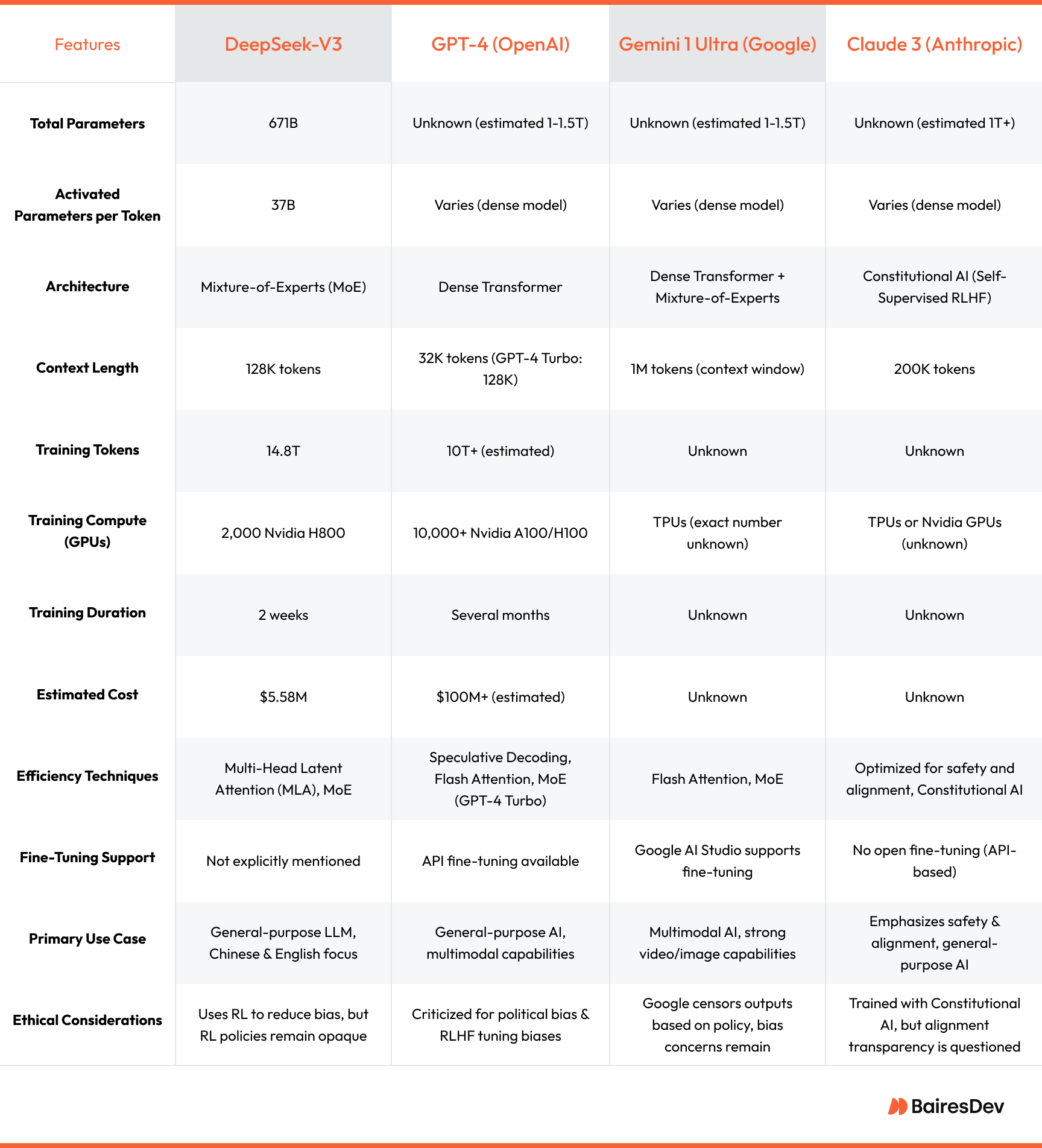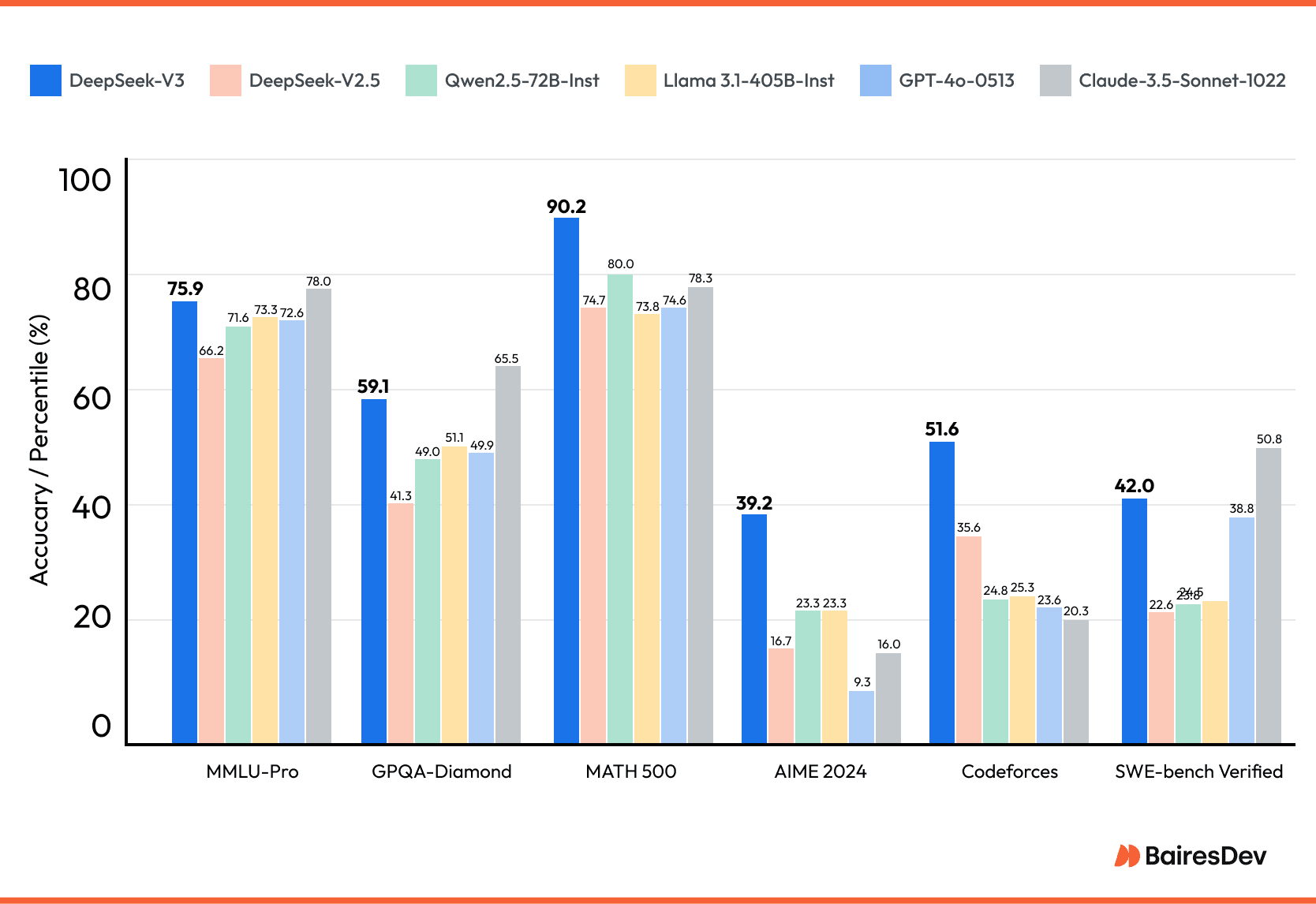While the industry scrambles to explain how DeepSeek pulled off the seemingly impossible, smart companies are asking the real question:
When breakthroughs happen at this pace, is playing catch-up a losing strategy?
DeepSeek shook the AI industry in late January by doing the seemingly impossible: matching top AI models using consumer-grade GPUs instead of specialized hardware. They proved you don’t need OpenAI’s massive compute infrastructure or billions in funding to innovate – just smarter reinforcement learning strategies and efficient resource allocation.
The tech world lost its mind—and for good reason: DeepSeek had bypassed the traditional “more data, more compute” approach that giants like OpenAI and Google swear by. The impact was immediate and massive – Nvidia’s stock plunged 17%, their worst drop since 2020, as investors realized expensive specialized chips might not be the only path forward. The fact that this came from a Chinese company only amplified the shockwaves through Silicon Valley.
What’s even more impressive is how they did it. DeepSeek pre-trained on 14.8 trillion tokens of English and Chinese content using roughly 2,000 Nvidia H800 GPUs. The entire process took about two weeks at a cost of $5.58 million—a fraction of what industry giants spend. While some experts debate whether this figure accounts for all costs, like infrastructure maintenance and engineering efforts, the efficiency gap remains staggering compared to competitors.
DeepSeek leveraged Reinforcement Learning (RL) instead of relying solely on labeled datasets. This approach allowed the model to learn and adapt based on feedback from its actions, reducing dependency on massive pre-labeled data. They also implemented a breakthrough called Multi-head Latent Attention (MLA), which compresses Key-Value pairs into a single latent vector instead of storing them for each token. This dramatically reduces memory requirements and speeds up inference—allowing their models to run efficiently on more accessible hardware.
What’s more, DeepSeek proved that the rules have changed. Innovation isn’t about who has the biggest data centers or the most expensive hardware anymore. It’s about who can think differently and execute faster.
The New Reality
Remember when tech innovation had a predictable rhythm? Those days are gone.
The old playbook of watching industry leaders and following their path is dead. Today’s reality is constant disruption – where a single GitHub repo can reshape the market overnight. But most companies are stuck in an endless cycle of reacting to every new development, burning out their teams while barely staying afloat.
If your strategy is just keeping up with trends, you’re already behind. The companies that are thriving aren’t adapting to change—they’re building organizations that expect it, plan for it, and use it as fuel for innovation.
DeepSeek showed us what’s possible when you think differently about innovation. They didn’t need the biggest data centers or the most expensive chips. They needed a fresh approach and the confidence to execute it.
Look at the specifications: DeepSeek-V3 and DeepSeek-R1 both leverage a 671 billion parameter architecture, yet they only activate 37 billion parameters per token thanks to their Mixture-of-Experts design. This selective activation makes their models incredibly efficient. And while other leading models struggle with context length, DeepSeek supports up to 128,000 tokens—matching or exceeding competitors like GPT-4 Turbo and approaching Claude 3’s capacity.
Here’s how DeepSeek stacks up against other leading models:

It’s worth noting that this extraordinary efficiency has raised eyebrows in the AI community. Some skeptics suggest that DeepSeek may have used shortcuts like scraping outputs from existing LLMs to build their training data, essentially “standing on the shoulders of giants” rather than starting from scratch. The controversy centers on whether it’s possible to achieve such results with the reported resources or if there’s more to the story than what’s been publicly disclosed. DeepSeek has firmly denied these allegations, but the debate continues among AI researchers trying to replicate their approach.
But specifications only tell part of the story. What truly matters is performance, and this is where DeepSeek delivers surprising results:

The Real Opportunity Ahead
Base LLMs are becoming a commodity. The same models that had companies scrambling to secure massive compute resources just months ago are rapidly becoming table stakes.
But having access to these models isn’t enough anymore – it’s mastering the application layer that counts: fine-tuning models for specific domains, building sophisticated retrieval systems, creating context-aware prompting engines, and orchestrating complex chains of AI operations. When everyone can tap into AI, the real winners will be the ones who can architect these systems in ways their competitors haven’t even thought of yet.
Think about it: basic ChatGPT integration? That’s yesterday’s news. The companies pulling ahead aren’t the ones with the fanciest AI models—they’re the ones with developers who can build intelligent orchestration layers, design robust vector databases, and create sophisticated prompt engineering systems. They’re turning foundation models into precision tools through advanced retrieval-augmented generation, custom fine-tuning pipelines, and domain-specific knowledge integration. That’s how you turn commodity AI into competitive advantage.
Building innovation tolerance

Innovation tolerance is about thriving in change, not just surviving it. Smart leaders have stopped treating every AI breakthrough like an emergency. Instead of “How do we deal with this?” they’re asking, “What can we build with this?”
When ChatGPT launched, Microsoft didn’t hesitate – they rebuilt their dev tools around it. Figma saw the AI wave coming and started experimenting. Their teams weren’t scrambling to catch up; they were already building what’s next.
That’s the difference between companies that get blindsided by change and those that drive it. Here’s how to build your innovation tolerance:
1. Keep a warm bench of devs:
When a major disrupter like DeepSeek “enters the chat,” you’ll want to have a warm bench of developers on hand to help.
A “warm bench” is a ready-to-deploy team of skilled developers who are already familiar with your organization’s systems and culture. They’re continuously trained across multiple technologies and are prepared to jump into new projects at a moment’s notice. They can tell fads from game-changers and have the deep expertise to confidently charge forward into uncharted territory.
While your competitors are spending months interviewing candidates and getting new hires up to speed with their systems, your pre-vetted team is already brainstorming implementation strategies. They’ve kept their skills sharp across multiple technologies for years and can jump between projects, so you’re not scrambling to build a team from scratch.
A warm bench already knows your company’s ins and outs and will be ready to hit the ground running when the new kid on the block arrives. Looking to build yours? We can help.
2. Create knowledge infrastructure
Gone are the days of quarterly knowledge transfers and siloed documentation. Insights should flow freely between teams, whether they’re working on AI implementations, cloud architecture, or front-end development. Developers should be able to quickly share discoveries, flag potential issues, and bounce ideas off each other.
For example, when your AI expert can easily collaborate with your security specialist, your mobile dev can quickly sync up with your cloud architect. Our cloud architecture teams have seen firsthand how the right collaborative infrastructure can turn scattered insights into organizational wisdom.
Leaders need to be able to preserve all that valuable institutional knowledge—the hard-won lessons, the clever solutions, the “we tried that and here’s what happened” stories—all while staying agile enough to pivot when the next DeepSeek-level breakthrough hits.
3. Cultivate a new mindset
Gone are the days when being good at your job meant mastering a single tech stack. Today’s most valuable players are the ones who get excited about learning new tools, even if some of them don’t pan out. Smart companies are creating “innovation sandboxes” where teams can experiment with emerging tech without fear of failure—because figuring out what doesn’t work is just as valuable as finding what does.
Our own version of this is our innovation labs. We’ve helped companies build the muscle memory they need for rapid adaptation so they can go from cautious followers to confident experimenters.
This mindset shift calls for clear processes for evaluating and implementing new technologies quickly. This means having frameworks in place that help teams rapidly assess potential impacts, make informed decisions, and move forward with confidence, even when the territory is uncharted.
Bracing for the next wave

The AI landscape will keep throwing curveballs like DeepSeek, but that’s exactly where the opportunity lies. While some organizations freeze in the headlights of rapid change, the real leaders are already building teams that thrive on it.
It’s worth considering the broader implications of DeepSeek’s approach. Their Reinforcement Learning methods reduce dependency on labeled data, potentially minimizing certain biases. However, this raises important questions about who designs the feedback mechanisms and whether these reinforcement policies themselves contain biases. As these techniques become more accessible—allowing smaller companies to train powerful models without massive datasets or expensive hardware—we’ll need to address these ethical considerations collectively.
When you take cutting-edge tools and combine it with deep human expertise, what you get is an environment where innovation not only expected, but welcomed. Build innovation tolerance today, because the next industry-shaking breakthrough isn’t years away—it could drop into your Slack channel tomorrow.







